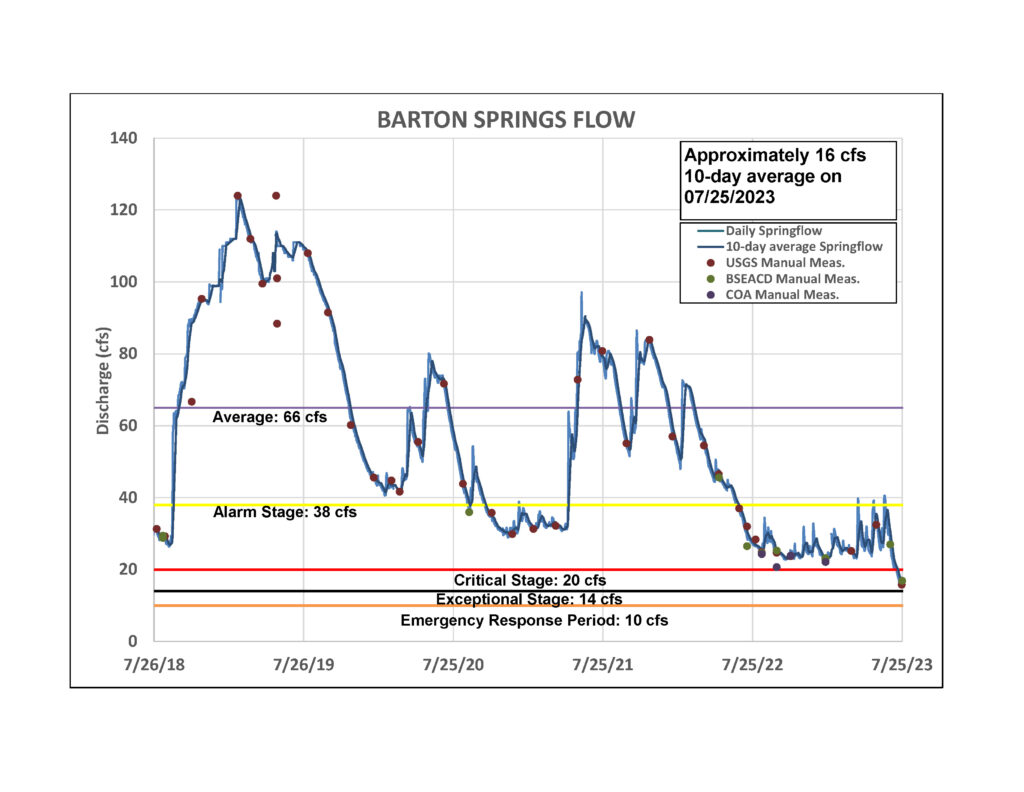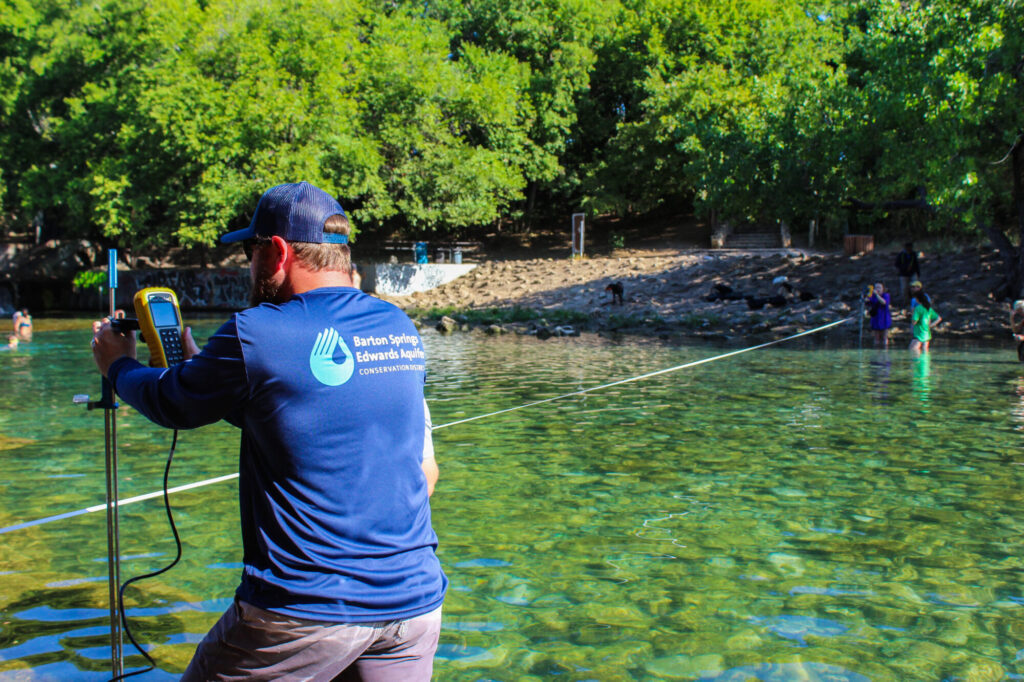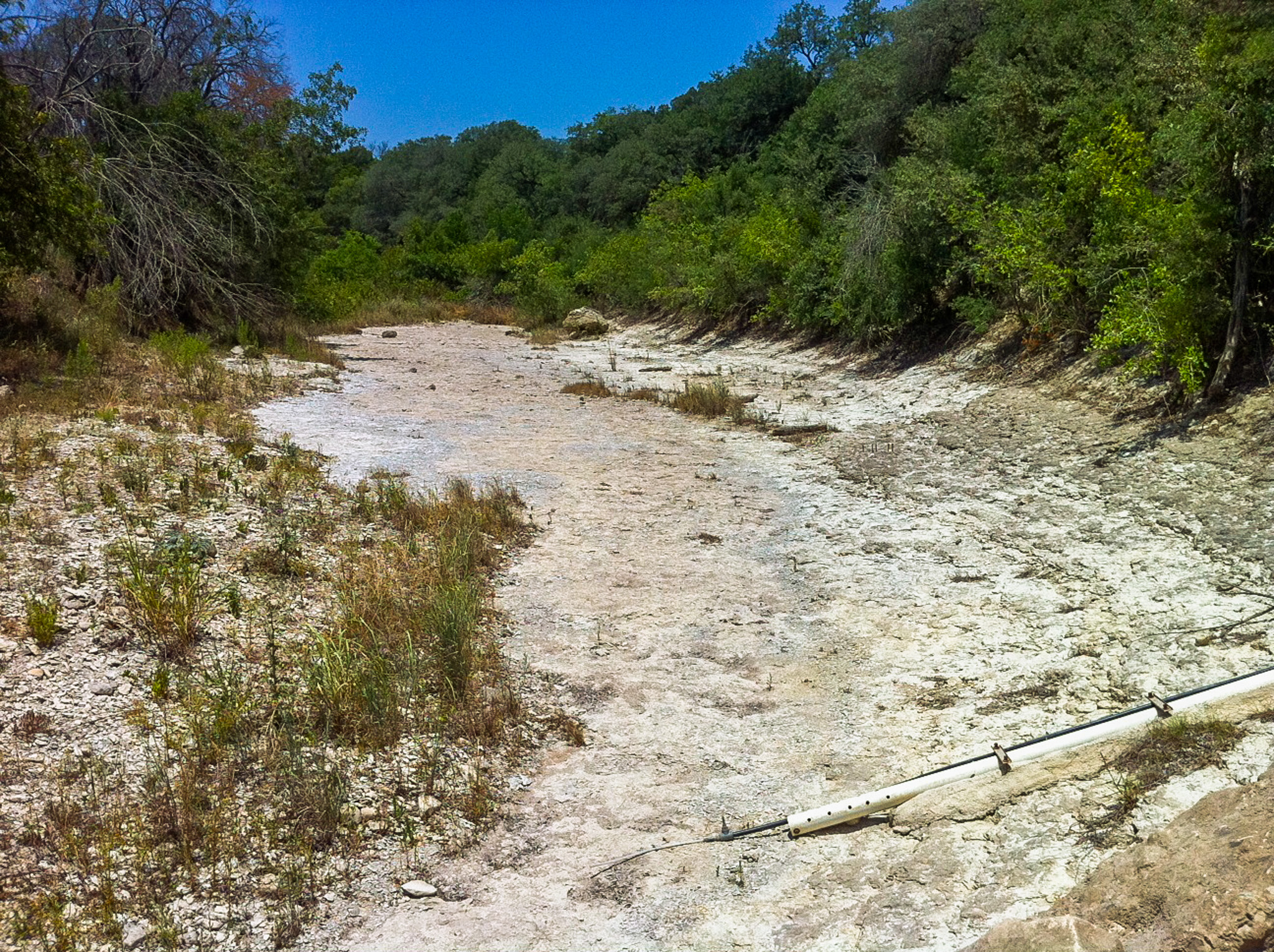By Shay Hlavaty
Barton Springs’ 10-day average flow fell to 16 cubic feet per second (cfs) on July 24, 2023. This is based on field measurements collected by the Barton Springs/Edwards Aquifer Conservation District (the District). For reference, the average flow for the springs since 1978 is 68 cfs. This decline in discharge is representative of the alarmingly low water levels of the Barton Springs segment of the Edwards Aquifer, which serves as a water source for over 60,000 people from south Austin to Kyle and is overseen and managed by the District.

Hydrograph displaying Barton Springs flow in cfs from July 26, 2018 to today.
While 16 cfs is above the current 14 cfs threshold for the District to declare a transition from Stage III to Stage IV Drought, falling below 17 cfs prompts District communications be sent to select permittees about potential significant pumping restrictions and permanent permit reclassification. Additionally, the District is taking necessary measures to prepare for Stage IV in case Barton Springs flow continues a downward trajectory.

Justin Camp, hydrogeologist technician for the District, measures Barton Springs’ flow on July 25, 2023.
Daily measurements of Barton Springs discharge began in 1978. The lowest recorded spring flow since then occurred in 2009 when it fell to 13 cfs but never crossed the District’s Stage IV drought threshold set at the time. Currently, the District has been in Stage III since October 2022 when the Lovelady monitor well initially crossed the groundwater level drought threshold. Lovelady groundwater levels and Barton Springs flow serve as the determinants for the District’s current drought stage. Only one of these sites needs to cross a new drought threshold for a District declaration to be made. However, to exit a stage, both Barton Springs and Lovelady must both rise above their respective drought threshold values.
With the forecast predicting triple digit temperatures and minimal rain chances for the foreseeable future, it’s imperative for people in the District to actively conserve water resources. Groundwater use should be limited for indoor demands needed to preserve health and safety with a very minor allocation provided for nonessential outdoor purposes. End-user customers served by water utilities on groundwater wells, such as City of Buda, City of Kyle, and Creedmoor Maha Water Supply Corp, are required to comply with their utility’s water use restrictions for any drought stage and can contact their service provider for additional information.
The only way for the aquifer to recharge and end these drought conditions is a long period of significant rainfall. Until this occurs, community members in and outside of the District can do their part by actively conserving water resources to minimize surface and groundwater depletion to help our aquifer levels recover.
District Communications Contact
- Shay Hlavaty, Communications & Outreach Manager
- shlavaty@bseacd.org
- 512-282-8441
_____________________________________
Barton Springs/Edwards Aquifer Conservation District is a groundwater conservation district charged by the Texas Legislature to work with well owners to conserve and protect the Edwards and Trinity aquifers and groundwater resources within its territory. The District covers 430 square miles in parts of Travis, Hays, and Caldwell counties; home to about 400,000 people. For additional information, visit www.bseacd.org or call 512-282-8441.

